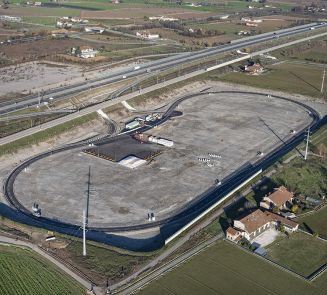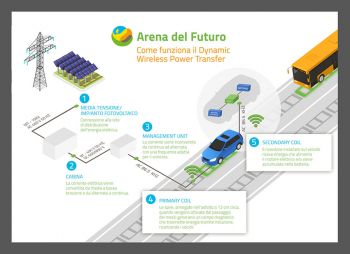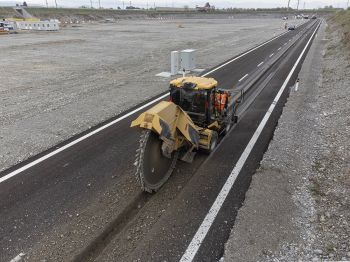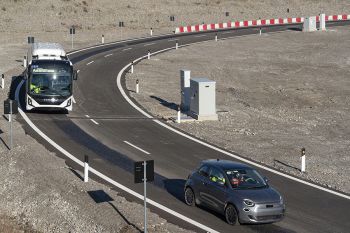Arena del Futuro: wireless charging ready for commercial development
The transition towards decarbonization in the mobility sector is happening quickly. The experimental Arena del Futuro along the A35 Brebemi motorway, is already considering the development of specific national and international strategic infrastructures projects.

Today, the Chairman of A35 Brebemi Francesco Bettoni together with all project partners, in the presence of the Minister of the Italian Republic Mariastella Gelmini, were in Chiari (Bs) to officially unveil the inductive recharging technology for electric vehicles known as DWPT (Dynamic Wireless Power Transfer), which has been tested in different parts of the world. The Italian pilot project coordinated by A35 Brebemi, a company owned by Aleatica which is the global transportation infrastructure operator with a presence in Europe and Latin America that focuses on sustainable and innovative mobility solutions, is the most advanced of its kind and involves organizations that are reference points in each sector of competence, including: ABB, Electreon, IVECO, IVECO BUS, Mapei, Pizzarotti, Politecnico di Milano, Prysmian, Stellantis, TIM, FIAMM Energy Technology, Università Roma Tre, Università di Parma, Vigili del Fuoco and Ministry of the Interior - Polizia Stradale. This technology makes it possible for EV (electric vehicles) to recharge their batteries while travelling in dedicated lanes. This innovative system of coils positioned under the asphalt transfers energy directly to the vehicles (cars, trucks and buses). A "zero emissions" mobility system, which includes different elements studied by the industrial excellences involved to interact with each other, such as: asphalt, control units, cables, electric vehicles and 5G connectivity.
Just a few weeks ago, experts working for the MIMS (Ministry of Infrastructure and Sustainable Mobility in Italy) presented a document entitled “Decarbonizing Transport: Scientific Evidence and Policy Proposals”, within the area of competence of STEMI (Structures for the ecological transition of mobility and infrastructure; STEMI was recently created by the Ministry to establish specific policies for the sector). The document recognizes that wireless charging technology is a possible solution that would help achieve pre-set objectives, particularly in light of current discussions related to the Fit for 55 package presented by the European Commission to implement the Green Deal strategy.
As a result of the testing that has been done and that is still underway, particularly as part of the Italian project “Arena del Futuro,” the results confirm that DWPT brings extraordinary advantages. As electric vehicles push the transportation sector towards decarbonization, despite critical issues related to battery lifespans and size, induction charging can contribute to a transition towards sustainable mobility models that further improve the user experience.
Research shows, as well, the many advantages of inductive charging technology: greater energy efficiency of vehicles due to the ability to charge on roads; a reduction in vehicle battery volume without impacting the load capacity for people and goods; an increased average lifespan for batteries due to the fact that charging peaks can be avoided by charging during the day at regular intervals and a better overall quality of travel, optimizing time with the combination of different recharging systems. All these goals are also achievable thanks to the innovative technologies offered by 5G and AI-based application solutions, which will facilitate the exchange of information between the vehicle and management platforms, increasing road safety and travel efficiency.
DWPT technology, in its dynamic and static inductive versions, has already attracted potential interest for commercial development in Italy and abroad. The versatility of the technology is a primary reason because in addition to being useful on roads and motorways, it is also suitable when combined within other infrastructures like harbours, airports and parking lots.
The “Arena del Futuro” project is a prime example of collaborative innovation for zero emission mobility for both people and goods.























